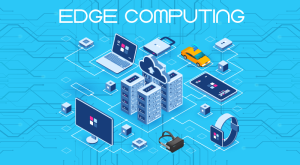
Edge computing is revolutionizing software development by bringing computation and data storage closer to edge devices. In this article, we will explore the concept of edge computing, its benefits, and its impact on software development. Discover how leveraging edge computing can enhance real-time processing, reduce latency, and enable a new generation of innovative applications.
Understanding Edge Computing
Edge computing involves processing and analyzing data at or near the edge devices, rather than relying solely on centralized cloud servers. By bringing computation closer to the source of data generation, edge computing enables faster response times, reduced network congestion, and improved security and privacy. It empowers devices like IoT sensors, autonomous vehicles, and drones to perform real-time analytics and make instant decisions, without relying heavily on cloud connectivity.
Advantages of Edge Computing
Edge computing offers several key advantages for software development. Firstly, it reduces latency by minimizing the distance data needs to travel, enabling real-time processing and responsiveness. Secondly, it enhances privacy and security by keeping sensitive data local, reducing the risk of data breaches. Additionally, edge computing improves bandwidth efficiency by reducing the amount of data transferred to the cloud, resulting in cost savings and improved network performance.
Use Cases for Edge Computing
Edge computing finds applications in various industries and domains. In the healthcare sector, it enables real-time patient monitoring, remote diagnostics, and emergency response systems. In the manufacturing industry, edge computing facilitates predictive maintenance, quality control, and real-time data analytics for optimized operations. Edge computing also plays a vital role in smart cities, autonomous vehicles, and augmented reality applications by enabling low-latency data processing and decision-making at the edge.
Challenges and Considerations
While edge computing offers immense potential, it comes with its own set of challenges. Developers need to consider factors such as limited computational resources at the edge, network connectivity issues, and data synchronization between the edge and the cloud. Ensuring data security, managing edge devices at scale, and implementing robust monitoring and management systems are critical aspects to address in edge computing deployments.
Conclusion
Edge computing is transforming software development, enabling real-time processing, reduced latency, and improved efficiency. By embracing edge computing, developers can unlock the potential of applications in various domains, from healthcare to manufacturing and beyond. Stay ahead of the curve and leverage edge computing to create innovative, responsive, and intelligent software solutions.
Incorporating edge computing into your software development strategy opens up a world of possibilities. Enhance real-time processing, reduce latency, and unlock the true potential of your applications. Embrace the edge computing revolution with us today!